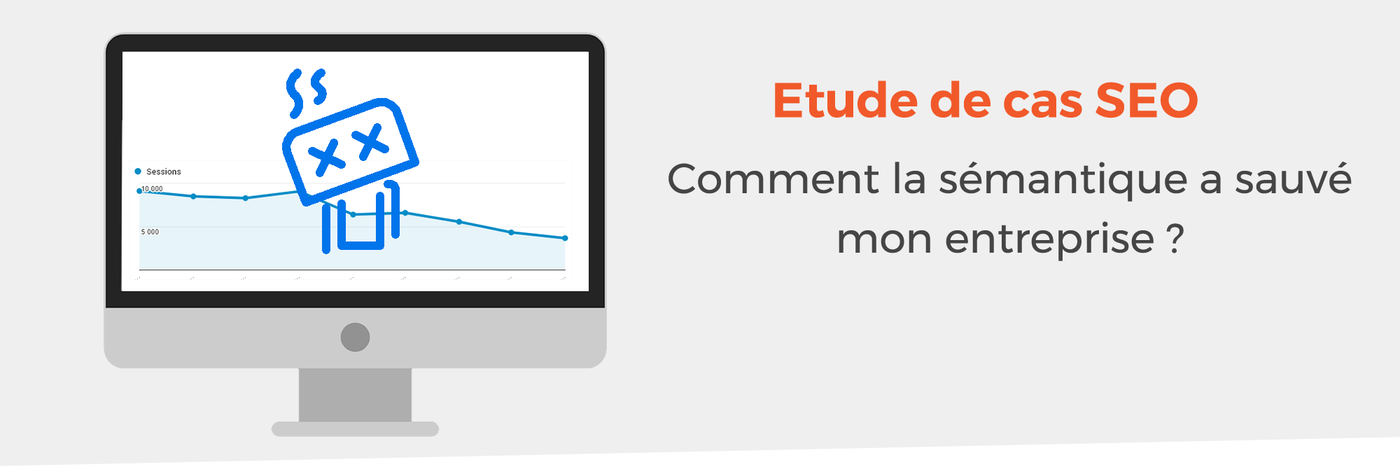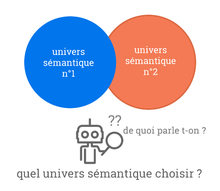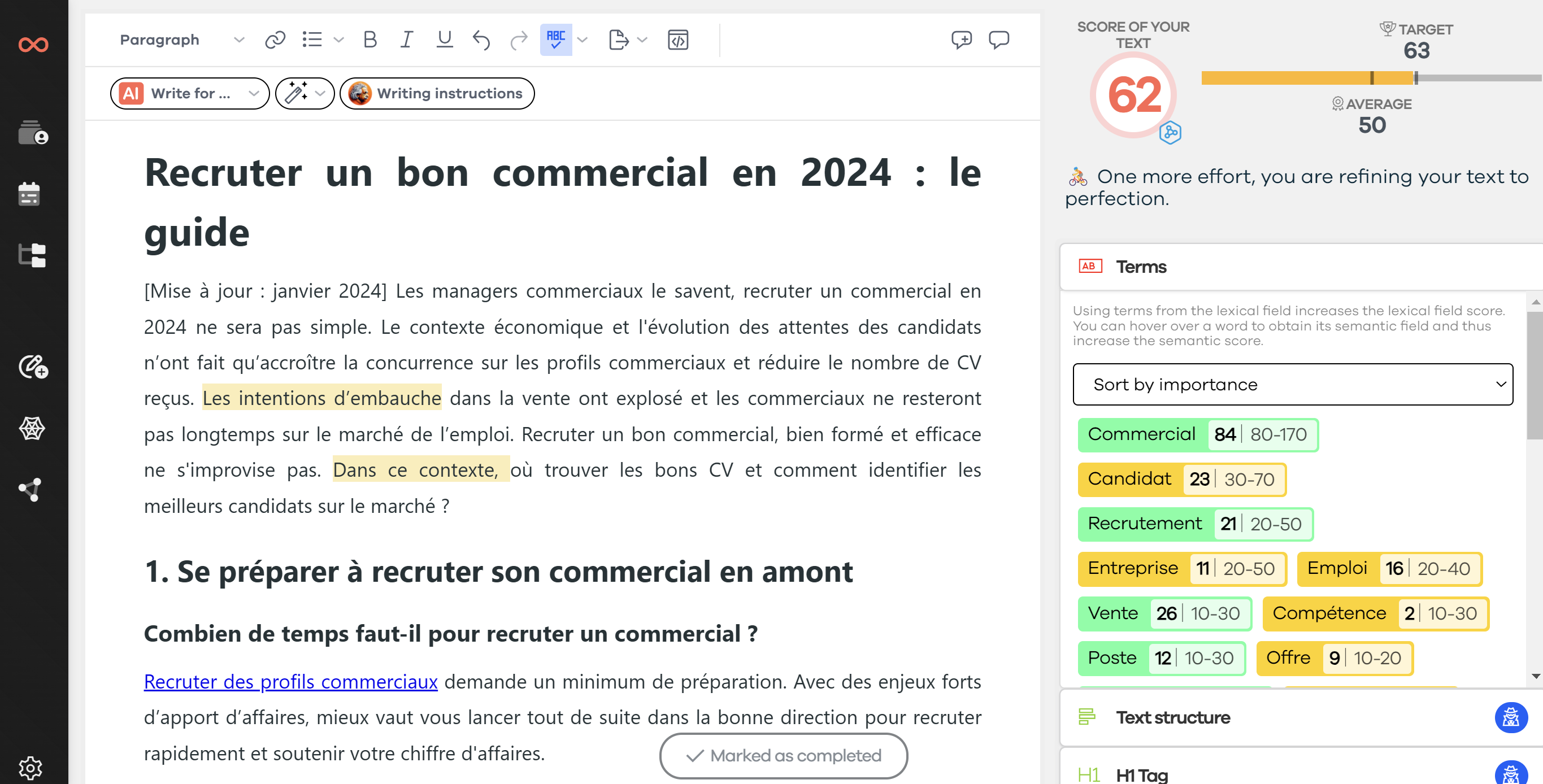Have you ever wondered why some content struggles to gain visibility? As the head of an agency for several years, I've noticed this type of phenomenon:
- a content that stagnates between the 40th and 90th position after several weeks of publication;
- following the publication of the content, one or more pages lose their positions, they are downgraded from the SERP (search engine results page).
In short, your content is underperforming. Even worse, your site loses positioning and your organic SEO suffers! You will find yourself in the following days with your client on the phone to account for it: is it a penalty? Bad incoming links (backlinks)? ... but have you thought about your content? Discover an example of SEO semantics reviewed that saved a company!
🚀 Quick read: the key points of the SEO semantic example detailed in this article
- Problem observed: a URL that was positioned on the first page of Google was updated. A month later, its ranking dropped to the eighth page!
- Search for the penalizing factor: two competitive queries were present in the content.
- Proposed solution: create two unique pages for
- Result obtained: the page regained its initial positioning within a few weeks and even reached the top 3 of the SERP after 6 months.
The example of the impact of SEO semantics on a company's visibility that you will discover, I have experienced it and I could summarize it as "how semantics saved a small business". I will explain to you, through a case study, how SEO content writing without semantics can penalize your organic SEO and how to remedy it.
📖 A story of semantic universe
Words have an impact, and this is measured by the actions of Internet users. Moreover, consumer behavior on a website influences the brand image, reliability, and social appeal of the company. All of this affects SEO (see the ranking factors), and therefore visibility in the search engine and the success of the same company.
Let's go back to the basics of semantics in organic SEO: the essential problem for a search engine like Google is to establish the relevance of a page for a given keyword. Indeed, algorithms poorly understand human language. They therefore use semantic analysis to try to understand the content of a page.
This process is also used to identify other common terms that the search engine would "expect" to see for this given keyword. This is very different from a simple keyword density approach, as there would not only be a density index, but also a factor of occurrence of associated lexies. In short, there is a semantic universe linked to each keyword.
Since the advent of Rankbrain and Hummingbird, Google is even more trying to determine the user's intent behind a keyword. The algorithm will focus even more on the secondary lexies that make up the page in order to guide the reader to the most relevant content possible.
🎯 Example of SEO semantics to the rescue of a small business
Let's get back to our case study...
Here is the context: a small business in the outdoor development sector that has reviewed all the content/pages of its website to improve its visibility on search engines. In our case, we will focus on two particular product categories. Here is the content of the first category:
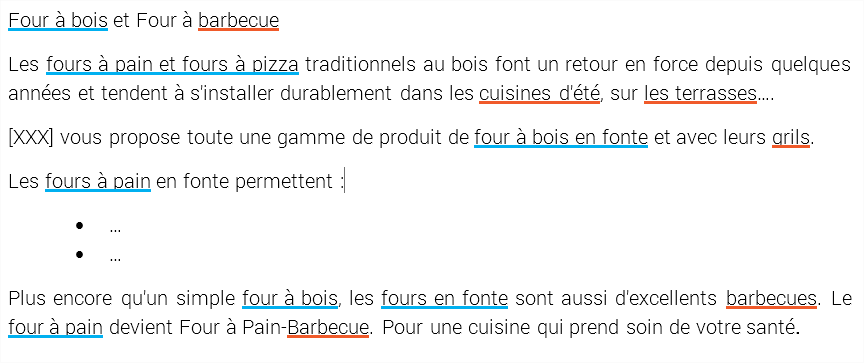
When analyzing the semantics of this text, the search engine is unable to determine which semantic universe it belongs to. Indeed, it talks about one theme and another using the lexical field of both themes.
The web copywriter simply sabotaged the page's SEO by inserting "toxic" lexies! As a result, the terms will interfere with the semantic understanding of the content. The engine, no longer able to find coherent information about the theme of the page, chooses the option of downgrading. The page of query n° 1 (in blue on the text) thus went from the TOP 5 to the 40th position a few dozen days after the publication of the version.
Remember that search engines aim to respond to the user's intent above all, the SERP is made up of results whose "quality" it can measure! Thus, when they cannot understand the main query of a page, they do not favor it.
Moreover, the same is true for an entire site. If you write several contents on the same keyword (without for example variations of type long tail), it will not display your pages (this is what we call keyword cannibalization).
Be careful, in this article I am talking about semantic universe or lexical field and not polysemy. Some words that you might search for in a search engine can have more than one meaning. For example, the word "mouse" can refer to an animal or a computer mouse. This is called polysemy.
❓ What to do to optimize semantic content?
Of course, repeating the same term over and over again to achieve a high density, without related lexies, is a futile effort. With the arrival of the Rankbrain update, you should focus on:
Where to start?
The optimization was divided into two main parts: the semantic optimization on the page and the structure of the site.
We proceeded as follows on the page to optimize:
- Determine the semantic universe related to the main subject of the page
- Measure the density of the terms on the page
- Remove parasitic terms (those that are outside the lexical field of the universe)
- Strengthen the content with terms from the Wordprint
In our case study, we removed all the names that are in red. These expressions were then used on page n° 2.
We also worked on the SEO thematic clusters of the website. Like siloing (or topic cluster), it is a technique of structure, content tree structure. The goal is to avoid an anarchic structure that interferes with the overall understanding by search engines.
A page must also be contextualized in the structure of the site. To learn more, visit the article: "Is the future of SEO the thematic cluster?".
For what results?
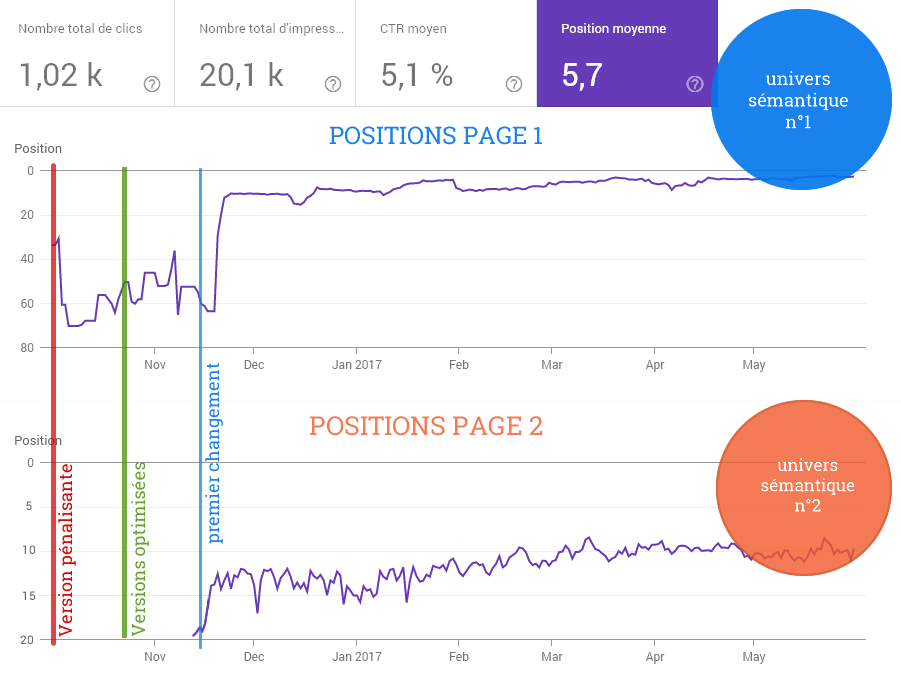
Screenshots of Google Search Console
- The penalizing version (with the parasitic lexies) was put online at the end of June, the category page plummeted in the ranking to go from the TOP10 to the 76th position.
- The page n° 2 was published at the end of June as well, it does not manage to position itself
- The optimized versions of pages n° 1 and 2 were put in place at the end of October
- The first changes in positions are felt as early as mid-November
Page n° 1 (blue theme) regained its TOP10 positioning within a month of the editorial content modification. It reached the golden triangle 6 months later (without content change). In short, the content now fulfills its role and generates traffic!

🔎 Where to start?
You need to identify pages that have low visibility, they may be penalized by poor content. You can:
- perform a semantic audit of your site
- export from the Google Search Console the list of pages that have an average position higher than 35
- check the content of these pages:
- What is the intended intent?
- What is the target semantic universe?
- What is the length of my content?
- Are there any parasitic terms?
- Is my page semantically reinforced?
- Modify your content and enrich it!
To go further and avoid this kind of inconvenience, I invite you to use SEOQuantum. This article is also an opportunity for me to present a brand new feature of the SEOQuantum semantic tool. This feature allows you to detect parasitic terms that can penalize your SEO.
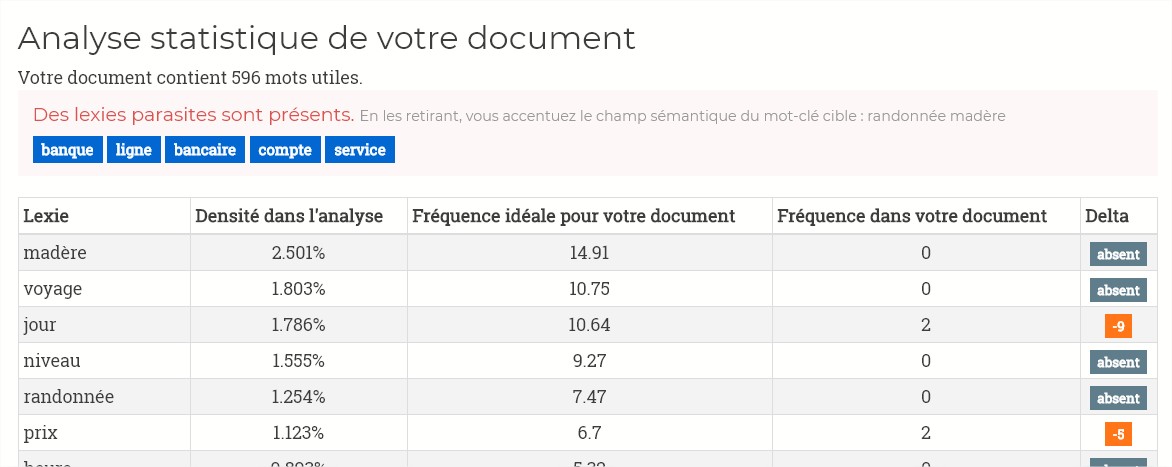
SEOQuantum Tool: Parasitic lexies
When you analyze your content via the text test tool, the algorithm detects semantic universes that do not match your target keyword. Thus, you can safely remove your toxic terms.
Through this example of SEO semantics, you have understood why the implementation of a content strategy is essential for your organic SEO. Indeed, poor optimization of a page or a site as a whole has dramatic repercussions on your visibility and your organic traffic!
After identifying the texts you need to optimize, check the semantics and eliminate all toxic terms! Without any further updates needed, you will see your pages climb to the top of the SERP.
However, if this is not the case, it may simply be that the chosen keyword is not the right one or that it is too competitive. You will also need to control all the on-page and off-page factors to boost your SEO.
Now it's your turn! Follow the steps proposed in this post to find areas for improvement and optimize your pages that have potential!
Need to go further?
If you need to delve deeper into the topic, the editorial team recommends the following 5 contents:
